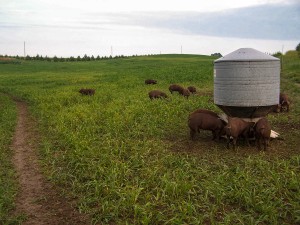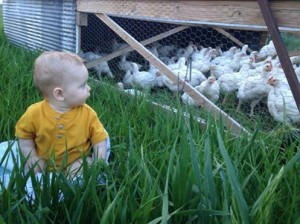USDA’s Down Payment Loan Program has been around for over 20 years, and this post is the second in a two part series that examines the impact this program has had on growing new farmers over the past 20 years. To read the first post in the series, click here. To learn more about credit programs to help farmers buy land, check out NSAC’s Grassroots Guide, or our blog to read the latest news on beginning farmers.
By Traci Bruckner, Senior Associate for Agriculture and Conservation Policy, Center for Rural Affairs

Two of the biggest barriers for beginning farmers and ranchers are access to land and access to capital. Helping beginning farmers not only find land, but also the capital to purchase land, is important to creating real opportunity for the next generation of farmers and ranchers. This is particularly important for rural communities as they become stronger and more viable as opportunities and ownership are expanded for the next generation. When we invest in helping the next generation of farmers and ranchers get started and build assets, we are creating a stronger and more vibrant future for rural communities
Ryan and Jessica Schieffer of High Land Hills farm represent that next generation. They farm near Crofton, Nebraska in the northeast corner of the state known for its beautiful rolling hills and wide-open spaces. They currently operate a 400 acre diversified crop and livestock farm and sell their pastured hogs, pastured chickens, free-range eggs and chemical-free produce to direct markets in the area. They are certainly doing things differently than the majority of the farms in the area, where you will find mostly corn and soybeans on farms growing ever larger. And even though they come from a farm background, it still took a lot of time and planning to turn their farm dream into a reality – plus some help from USDA.
Ryan was born and raised on the farm where he and Jessica now live and farm. When his parents urged him to earn his college degree and work off the farm, he moved to Des Moines, IA, but quickly found that city life wasn’t for him and moved back home to start farming with his parents.
Jessica grew up in Houston, TX and also lived in Washington, D.C, and although she doesn’t have a background in farming, she has always loved the outdoors and good food. Farmers markets were an important part of her journey to embracing nutritious and organic food and eventually starting a farm of her own. “But it was so expensive in DC, so my friends told me, I need to marry a farmer so you can farm and have your garden too.” She took their advice and found Ryan on farmersonly.com.
Jessica and Ryan farm a total of 400 acres, most of which they rent from Ryan’s parents. They raise heritage Red Wattle hogs — a medium to large red hog that is known for its excellent meat quality and foraging ability — on pasture and non-GMO feed corn. They also raise pastured broiler chickens that are fed organic feed, and free-range chickens for eggs, as well as many different vegetables and some fruit. The row crops are all non-GMO corn and soybeans, which they use as feed for their livestock and rotate with other crops like alfalfa.

The Schieffer’s use a host of direct marketing opportunities to market their locally raised pork, chicken, eggs and produce, including farmers markets, their website, Craig’s list, and local food websites such as Local Harvest.
When Ryan’s parents were ready to start transitioning a portion of their farm to him and Jessica, they found assistance through USDA’s Down Payment Loan Program. When they visited with their local bank about financing options, they discussed with them the benefits of the Down Payment Loan Program, stating that it allows them to limit their down payment to 5 percent of the purchase price, receive 45 percent of the loan through USDA’s Farm Service Agency at 1.5 percent interest that can be paid back over 20 years, and then work with the bank to finance the remaining 50 percent of the loan.
The program helped the Schieffer’s successfully transition a 40-acre portion of the family farm from one generation to the next. The parcel includes 10 acres of cropland, 10 acres of pasture, 5 acres for the house, and 15 acres for outbuildings. They continue to rent the remaining farm and pastureland surrounding the 40-acre parcel from Ryan’s parents. Over time, they will continue to transition those additional acres and hope to again take advantage of the Down Payment Loan Program.
Jessica and Ryan said the Farm Service Agency staff they worked with was amazing. Jessica said, “You could tell he wanted to see us do well as he spent a great deal of time with us, helping us through every step of the process. He deserves an award for all his work.”
The Schieffer’s believe that with so many small farms being squeezed out and the growing age of farmers across the country, programs like the Down Payment Loan Program are absolutely critical and are one of the most effective ways to break down land access barriers. “Having other people look out for you so you can concentrate on what you need to do makes it that much easier to build a successful farming operation.”
They have big hopes for the future of their farm. They are passionate about providing high quality farm-raised chicken, heritage pork, as well as beef in the near future, at an affordable price. Jessica believes there are some barriers to small farmers like her and Ryan in reaching that goal, including limited access to meat processing facilities.
Federal policy, when shaped to serve the next generation of farmers and ranchers, can help make farm dreams a reality. Ryan and Jessica represent the promising future of agriculture that will keep our rural communities strong and prosperous.
To read the first post in this series, which provides a closer look at the history of this program and how it’s being used across the country, click here.

